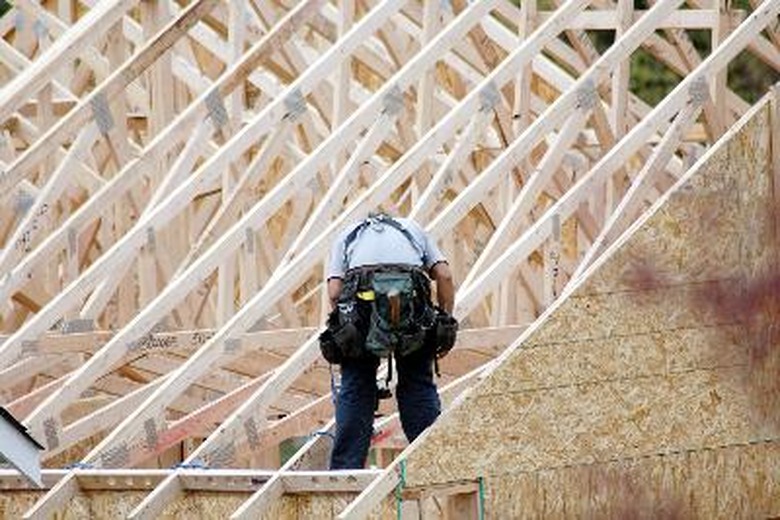Concrete Block Vs. Wood Construction
Most homes are traditionally constructed from wood, while concrete block is normally used for schools and other institutions. However, concrete block can be a useful home building material, as well. Learning the benefits and downsides of the most common building materials can help you make smart choices about your next remodeling or building project.
Cost
Cost
According to the US Department of Housing and Urban Development, traditional wood framing cost around $13 per square foot of living area in 2002. According to Concrete Homes magazine, a concrete block home with a stucco finish usually cost around $6 per square foot in 2002. Concrete prices may increase in areas far from a supplier, since this heavy material costs more to ship than wood.
Insulation Value
Insulation Value
Most insulation recommendations are formulated for wood-frame houses. The wood itself has an R-value, or insulation value, of a little more than 4. However, wood studs are widely spaced in most construction, and that gap must be filled with insulative material to prevent heat from passing through the wall. The US Department of Energy recommends at least R-25 to R-60, or 8 to 19 inches of fiberglass insulation, in all wood-framed homes. Concrete naturally has an R-value of 1.1 per inch (more for lightweight block). Filling the block cavities with foam or vermiculite insulation can help reduce the amount of insulation required on the interior walls. Concrete's thermal mass, which can store heat from the sun, can also offset its much lower R-value.
Durability
Durability
Like other masonry materials, concrete block is fire and termite-resistant. Its insect resistance makes it a popular building material in the American Southeast, where wood-eating insects are common. However, a block house may still have wooden elements that are subject to insect damage. According to Old House Web, concrete block has a life expectancy of around 100 years. Wood frames vary significantly in lifespan, since they deteriorate more quickly in moist conditions, but can last as long as block if properly maintained.
Environmental
Environmental
Both wood and concrete block have significant environmental impact. Wood dimensional lumber comes from harvested trees, a renewable resource, but may need more frequent replacement and repair than block. Concrete block is extremely durable, but requires significant energy to produce, since concrete is made in large, high-temperature kilns. Concrete is heavier and more resource-intensive to transport. Both materials can be recycled – wood into particle board and similar products, and concrete into aggregate material for new concrete.
References
- US Department of Housing and Urban Development: Steel Vs. Wood
- "Concrete Homes"; Concrete Masonry Receives a Warm Embrace; Leslie Lichtenberg
- US Department of Energy: Recommended Levels of Insulation
- US Department of Energy: Concrete Block Insulation
- "Concrete Homes"; Building Your Concrete Home: Part 1; Carole McMichael
- Old House Web: Life Expectancy
